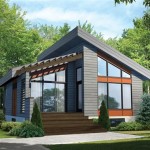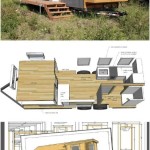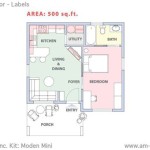Best Small Low-Light Indoor Plants
Many individuals desire the aesthetic and air-purifying benefits of indoor plants but lack the ideal lighting conditions. Fortunately, several small plant varieties thrive in low-light environments, making them perfect for apartments, offices, or homes with limited natural light. Selecting the right low-light plant can add a touch of green and improve indoor air quality without requiring extensive care.
Snake Plant (Sansevieria trifasciata): Known for its striking upright leaves and air-purifying qualities, the snake plant is a remarkably resilient choice for low-light conditions. It tolerates neglect and requires infrequent watering, making it ideal for beginners. Several varieties exist, offering a range of leaf shapes and colors, from deep green to variegated patterns. Snake plants also convert carbon dioxide to oxygen at night, contributing to better indoor air quality.
ZZ Plant (Zamioculcas zamiifolia): The ZZ plant is arguably one of the most low-maintenance houseplants available. It tolerates extreme neglect, including low light, infrequent watering, and fluctuating temperatures. Its thick, waxy leaves store water, allowing it to withstand periods of drought. The ZZ plant also comes in a "Raven" variety, featuring dark purple-black foliage.
Cast Iron Plant (Aspidistra elatior): True to its name, the cast iron plant can withstand a wide range of challenging conditions, including low light, infrequent watering, temperature fluctuations, and even some neglect. It features dark green, strappy leaves and grows slowly, making it a suitable choice for smaller spaces. While it may not be the fastest grower, its resilience makes it a reliable choice for even the most inexperienced plant owners.
Peace Lily (Spathiphyllum): While peace lilies appreciate some indirect light for optimal flowering, they can tolerate low-light conditions. These elegant plants feature dark green foliage and produce beautiful white "flowers" called spathes. They prefer consistently moist soil and can be a good indicator of when they need watering, as their leaves will droop slightly when thirsty. Peace lilies also help filter certain indoor air pollutants.
Prayer Plant (Maranta leuconeura): Though they prefer bright, indirect light, prayer plants can adapt to low-light environments. They are known for their distinctive leaf patterns and the unique way their leaves fold upwards at night, resembling praying hands. Prayer plants prefer consistently moist soil and higher humidity levels, which can be achieved by grouping them with other plants or using a humidifier.
Chinese Evergreen (Aglaonema): Chinese evergreens are available in a wide array of colors and patterns, making them an attractive choice for low-light spaces. They tolerate low light and prefer to dry out slightly between waterings. Certain varieties, like the 'Silver Bay' aglaonema, can even tolerate very low light conditions. These plants also contribute to purifying indoor air.
Pothos (Epipremnum aureum): While pothos thrives in bright, indirect light, it can adapt to low-light conditions, though its growth may slow. This versatile plant can be grown in hanging baskets or trained to climb. Pothos comes in various cultivars with different leaf patterns and variegation. It's also known for its air-purifying capabilities.
Philodendron (Philodendron hederaceum): Similar to pothos, heartleaf philodendrons are adaptable and can tolerate low-light conditions. They feature heart-shaped leaves and can be grown in hanging baskets or allowed to trail. Philodendrons prefer consistently moist soil but should not be overwatered. They also offer air-purifying benefits.
Lucky Bamboo (Dracaena sanderiana): Although not technically bamboo, lucky bamboo is a popular low-light plant that can be grown in water or soil. It's often sold in decorative arrangements and requires minimal care. Lucky bamboo prefers indirect light but can tolerate low-light environments, though its growth rate may be slower.
Spider Plant (Chlorophytum comosum): Spider plants are adaptable and can tolerate a range of lighting conditions, including low light. They are known for their cascading "spiderettes," or baby plants, which dangle from the mother plant. Spider plants prefer bright, indirect light for optimal growth, but they can still survive in lower light conditions, though their growth may slow down, and they might not produce as many spiderettes.
When caring for low-light plants, it's essential to avoid overwatering, as these plants require less frequent watering than their high-light counterparts. Allowing the soil to dry out slightly between waterings helps prevent root rot. It’s also important to consider the specific needs of each plant variety, as humidity preferences and temperature tolerances can vary.
Choosing the right small, low-light plant can significantly enhance the aesthetic appeal of any indoor space while also contributing to a healthier indoor environment. These resilient plants offer a convenient and rewarding way to bring a touch of nature indoors, even in less-than-ideal lighting conditions.

Best 30 Low Light Indoor Plants For Home Or Office

Best Low Light Indoor Plants 2024 Forbes Vetted

Best Low Light Houseplants Plants For Dim Rooms

Small Indoor Plants That Don T Need Sun Gardening Know How

Top 10 Low Light Indoor Plants Garden Advice Lists

12 Best Air Purifying Indoor Plants You Won T Kill A Piece Of Rainbow

10 Best Low Light Plants For Office That Are Also Maintenance

Our Top 10 Low Light Houseplants Belgian Nursery

Best House Plants For Low Light The Happy Houseplanter

Best Low Light Indoor Plants 2024 Forbes Vetted








